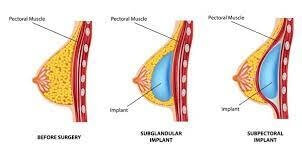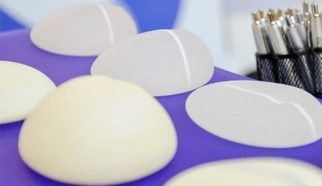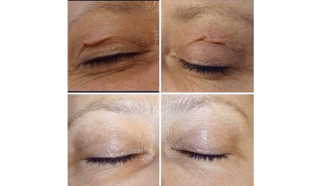
Breast prosthesis cosmetic surgery Everything you need to know about this procedure!!
Breast prosthesis or reconstruction of breast tissue through volume increase, which can be said to be one of the most popular cosmetic surgeries along with nose surgery. Of course, sometimes it is not just a cosmetic function, and breast prosthesis can be very promising for women who empty their breasts due to breast cancer. In this article, we have fully explained everything you need to know about this non-invasive surgery, we hope it will be useful.
How to perform breast prosthesis cosmetic surgery
In this procedure, after the consultation session and choosing the best option and prosthesis for the person’s breast, the halo area under the breast is often cut. The reason for this is that the scar is hidden under the breast after surgery. Then, the selected prosthesis is embedded in the patient’s chest, and then the opened area is closed with absorbable sutures. Of course, the breast cut area has different places that we will discuss next:
Types of incisions for placing the implant inside the breast tissue
1- Inframammary incision
2- Cut from the armpit area
3- Placement of the prosthesis through the incision around the areola of the chest
The type of breast incision for implant placement depends on the opinion of the surgeon, the anatomy of the patient’s body and the type of prosthesis. In any case, the doctor tries to eliminate the cut mark with post-breast prosthesis care.
Types of breast prostheses and implants in terms of shape and gender
In general, in terms of shape, there are two models for breast prostheses:
* lacrimal breast prosthesis (anatomical)
This type of implant causes the breast to take on a natural shape and not have an abnormally prominent shape. In these prostheses, the upper part is thinner than the lower part, which makes the breast look more natural and beautiful after the operation.
* Round breast prosthesis
Round breast implants are recommended for people who like to have prominent and large breasts. The amount of protrusion of the round implant is the same in all places. In the article comparing round and teardrop prosthesis models, a comprehensive comparison has been made about these prostheses.
In terms of the type of prosthesis, there are generally 3 models:
* Saline breast prosthesis
This type of prosthesis is slightly harder than silicone, usually round and made with natural salt water that can be absorbed by the body. The positive thing they have is that if the prosthesis has a problem, such as a tear, it is easily absorbed by the body and does not cause any problems. In addition, they are more affordable and require less medical examinations after surgery. But on the other hand, the possibility of possible tearing, abnormality when touched, the possibility of a negative effect on the breast tissue, and the possibility of folding the skin on the breast are some of the disadvantages of this type of prosthesis. This prosthetic model is not recommended for people under the age of eighteen.
* Silicone breast prosthesis (gel-filled implant)
A silicone implant has a gel-like texture inside and a firm silicone texture around it, which brings more security to the prosthesis. Usually, these prostheses require more care and examination by a doctor and are not recommended for people under 22 years old. Compared to the higher-priced saline prosthesis, without the risk of spontaneous emptying, they remain natural breasts and usually require more post-operative examination. Obviously, after placing the silicone prosthesis, an MRI should be performed on the patient.
* Fixed breast prosthesis
These models of prostheses are also very up-to-date and do not easily suffer from tearing and changes in appearance. The biggest problem that can be attributed to this model of prostheses is the number of incisions under the breast to place these prostheses.
Who are candidates for breast implants?
* The applicant must be physically and mentally healthy.
* Women who have had all or part of their breasts removed due to recovery from breast cancer.
* People who have asymmetrical or abnormally large and small breasts.
* Women who have small breasts for any reason.
* People who have sagging breasts due to old age or other reasons.
* Restoring and reviving the shape of the breast after pregnancy and similar cases
Advantages, disadvantages and side effects of breast prosthesis surgery
Among the advantages of this cosmetic surgery, the following can be mentioned:
* Highlighting and shaping the breasts
* Balancing the breast organ with other body parts
* Increased self-confidence and individual attractiveness, especially after breast cancer
The problems and disadvantages that may occur in this procedure are the following:
* The possibility of creating a hematoma under the breasts
* Despite breast reconstruction, this operation can also cause their asymmetry.
* Incorrect positioning of the prosthesis in the breast tissue due to the presence of an unprofessional surgeon
* Possibility of occurrence and risk of infection
* The possibility of movement of the breast prosthesis in the body tissue
* Wrinkles on the skin of the prosthetic breast
* Excessive enlargement and sagging of the breasts after a few years (of course, the breasts can also be reconstructed.)
* Feeling pain in the surgical area
* Sensation and nerves in the surgical area may have problems for some time.
10 tips for recovery and recovery after breast implant surgery
1-Due to the anesthesia and lack of full consciousness of the patient during the operation, it is mandatory to be accompanied in the office.
2- The stitches under the breast are usually absorbable and disappear after a while.
3- If you have symptoms of pain, fever and infection, be sure to consult with a related specialist doctor.
4- Do not engage in heavy physical activities for at least 6 weeks after surgery.
5- In order to rest, do not sleep on your chest and stomach for a certain period of time (depending on the doctor’s opinion).
6- It is recommended to use a medical bra up to 12 weeks after the operation.
7- To prevent possible pain in the chest area, the doctor prescribes certain antibiotics and pain relievers.
8- up to 3 weeks after the operation from consuming and resting





